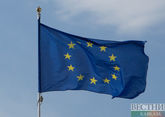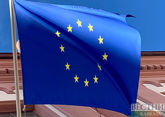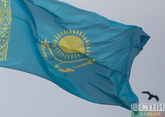The European Union’s new strategy on Central Asia will be officially presented by High Representative of the Union for Foreign Affairs and Security Policy Federica Mogherini and European Commissioner for International Cooperation and Development Neven Mimica during the 15th EU-Central Asia Ministerial meeting in Bishkek on July 7. The European External Action Service (EEAS) has already published the document 'The European Union and Central Asia: New opportunities for a stronger partnership'. This document is to be endorsed by the European Council.
Thus, the point of Brussels is that, despite a number of its own problems (Brexit, migration, contradictions between common European and national values, economic turmoil, etc.) and insufficient influence compared with China, Russia and the United States, the EU continues to actively promote its interests in Central Asia. The 17-page document sets out "a fresh vision for a stronger partnership with Kazakhstan, Kyrgyzstan, Tajikistan, Turkmenistan and Uzbekistan." It comes at "a key moment of fast-developing Euro-Asian connectivity". The strategy aims to forge a "stronger, modern and non-exclusive partnership with the countries of Central Asia" so that the region develops as a sustainable, more resilient, prosperous, and closely interconnected economic and political space. The EU stresses that it seeks to deepen its engagement with those Central Asian countries willing and able to intensify relations. At the same time, the document notes that the European Union respects the aspirations and interests of each state in the region and maintains the need to differentiate between specific country situations.
Expert analyst on Europe Dimash Abdullin (Kazakhstan) commented on the document on the request of Vestnik Kavkaza: "This is both a vision and a joint statement on the opportunities, which is very encouraging. One should understand that the EU has been a supporter of stability and development since its inception and up to the present day, and tries to avoid undesirable changes in many areas. Precisely these vectors are reflected in the document".
According to the expert, on this basis the EU will propose its initiatives and projects in Central Asia during the new strategy period. The situation in Europe itself is very ambiguous: the change in the format of united EU, the results of Brexit are not clear, European politicians remain hopeful that the UK will stay in the EU. The election to the European Parliament and the possible change of the President of the European Commission are also not as easy and pleasant as it seems outside the EU.
"Relations with the U.S. are currently complex and the goals of the EU and the U.S. do not always coincide. The EU’s course is in a state of constant individualization and formatting. Europe needs stability and reliability during this period. EU diplomatic work must be taken into account. Europe is a master of diplomacy. The document may be presented in its current form, or might be amended. Therefore, it is presented as a 'Joint Communication and current vision of the strategy'. The deadline for submitting the document apparently could not be postponed until July," Dimash Abdullin said.
He noted that the management and diplomatic service of the EU demonstrates excellent methods for solving problems in diplomacy and foreign policy. The expected publication of the Strategy in the spring could be postponed to July from due to various factors - the opportunity to present the document in a calmer atmosphere, the election to the European Parliament, the possible election of a new EC President.
Evaluating the situation in Central Asia, the expert said that no changes in foreign policy are expected in the near future. "The policy of strengthening and developing relations with the EU is strategic. With regard to the various vectors of foreign policy, everything is as balanced as possible. The presidential election in Kazakhstan does not affect this issue. A positive factor is the formation of a common foreign policy course 'group 5 Central Asia' [gCA5 is a term proposed by Abdullin - VK] and this course is clearly progressive. The publication of a new EU Strategy on Central Asia will contribute to positive political and economic growth in the countries of the region.
The new EU Strategy for Central Asia is related to the Eurasian Economic Union (EEU) and Russia, Abdullin is convinced. An improved integration with the EU have a beneficial effect on Eurasian integration as a whole.
The document on the new EU Strategy on Central Asia consists of several provisions and sections. This is presented briefly and clearly in the newsletter on the new EU Strategy for Central Asia. According to Abdullin, the document feels like the vision of the present and future cooperation between the EU and Central Asia and its main directions.
In particular, the EU will work to address structural constraints on intra-regional trade and investment, support remaining Central Asian states' accession to the WTO and promote sustainable connectivity. The transition to general rules and a more integrated regional market, the solution of common problems such as environmental degradation and terrorism, the intensification of cooperation with Central Asian partners to promote peace in Afghanistan are also important.
A key element of the participation of Brussels in the region's life remains the Enhanced Partnership and Cooperation Agreement. The EU signed such a document with Kazakhstan in 2015. Now work on similar agreements is being conducted with Kyrgyzstan and Uzbekistan. Tajikistan also expressed interest in negotiating such a treaty. The EU stresses that these agreements do not exclude countries from participating in other initiatives like the Eurasian Economic Union or free trade agreements.
"The publication of a joint communication on the new strategy should cause the world's great interest in the EU-Central Asia relations. After the publication of a number of documents on the EU and Asia connectivity, the opening of the EU free trade zone with Japan, meetings of European leaders with the leadership of China, this Strategy should make a very good effect. Even considering the fact that the region is not very famous or popular in Europe, it will contribute to the growth of positive actions and increased activity in Central Asia. The official presentation of the EU Strategy on Central Asia in July is likely to consolidate a positive effect," Dimash Abdullin concluded.
Director General of the Analytical Center 'Strategy East-West' (Kyrgyzstan) Dmitry Orlov believes that the European Union, by strengthening its presence in the East, wants to get rid of the strong influence of the United States. "Brussels, and most likely Berlin, understood that it's time to stop considering the interests of the EU through the prism of the U.S. Another question is how the new Europe will behave [Baltic states, Eastern European countries - VK], which joined the EU with the assistance of Washington. It imposes certain obligations. Therefore, a conflict of interest between the new and old Europe is possible. The fact is that the EC made a very interesting statement that the EU should bring the Central Asian countries, in particular Kyrgyzstan, out of the influence of Russia and China," Dmitry Orlov told Vestnik Kavkaza. According to the expert, it’s hard to imagine how they will do it. Since Russia and China are Kyrgyzstan's main economic partners. According to Commissioner for International Cooperation and Development Neven Mimica, the EU allocated a little more than $1 billion to the Central Asian countries from 2014 to 2020. The intention of the EU to 'pull up' Afghanistan to Central Asia is also unclear. "Initially, it was the American idea of 'Greater Central Asia'. It turns out that the U.S. and the EU want to shift some of the responsibility for Afghanistan to the countries of Central Asia," Orlov noted.










